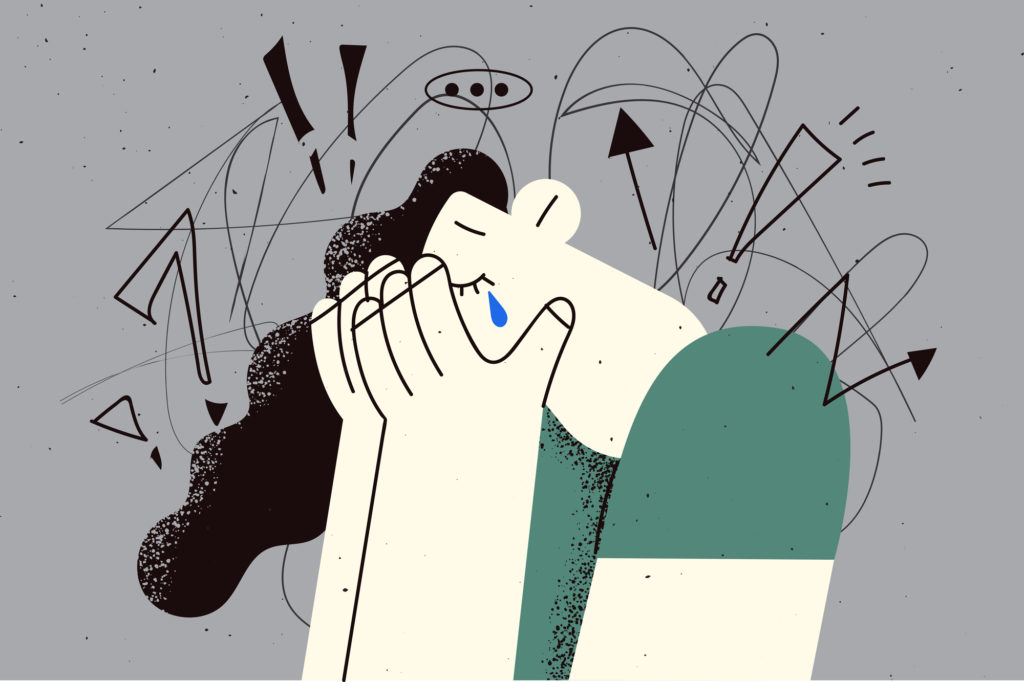In the intricate tapestry of the human psyche, the Defectiveness/Shame Schema[1] weaves a narrative that extends its tendrils deep into the core of self-perception and interpersonal relationships. Rooted in early experiences of perceived inadequacy, this intricate schema casts a long shadow over one’s sense of self-worth and the ability to forge authentic connections.
The Genesis of Defectiveness/Shame:
The seeds of the Defectiveness/Shame Schema[2] are often sown in moments where a person internalizes a profound sense of inadequacy. Whether influenced by external judgments, societal expectations, or early experiences of rejection, the schema takes root in the soil of perceived flaws.
The Persistent Whisper of Shame:
Like a persistent whisper, the Defectiveness/Shame Schema[3] echoes a narrative of unworthiness. It manifests as an internalized belief that one is fundamentally flawed, unlovable, or undeserving. Shame becomes an oppressive force, shaping self-perception and influencing interactions with the world.
The Dance of Perfectionism:
Individuals harboring the Defectiveness/Shame Schema often engage in a delicate dance with perfectionism.[4] The pursuit of flawlessness becomes a coping mechanism—a desperate attempt to mask perceived defects and secure external validation as a countermeasure against the lurking shame.
Impact on Relationships:
The impact of this schema on relationships is profound. Fear of rejection, an aversion to vulnerability, and an inability to embrace one’s authentic self can create barriers to forming deep, meaningful connections. The fear of exposing defects becomes a pervasive theme.[5]
The Internal Dialogue of Self-Loathing:
Internally, the Defectiveness/Shame Schema fuels a relentless internal dialogue of self-loathing. The individual may navigate life with an underlying belief that they are inherently flawed, leading to cycles of negative self-talk and a persistent fear of being exposed and rejected.[6]
Breaking the Chains of Perceived Flaws:
Addressing the Defectiveness/Shame Schema involves breaking the chains of perceived flaws. It requires a courageous examination of the roots of shame[7], an exploration of self-compassion, and a commitment to challenging the distorted beliefs that fuel feelings of inadequacy.
Embracing Self-Compassion:
A crucial step in healing involves embracing self-compassion[8]. Individuals learn to extend kindness to themselves, recognizing that flaws are a shared aspect of the human experience. Through self-compassion, the grip of shame begins to loosen.
Challenging Distorted Beliefs:
The Defectiveness/Shame Schema thrives on distorted beliefs[9]. Challenging these beliefs involves a cognitive restructuring process, where individuals consciously question and reshape the negative thoughts that contribute to feelings of defectiveness.
Authenticity as an Antidote:
Cultivating authenticity becomes an antidote to the Defectiveness/Shame Schema. By embracing vulnerability, expressing imperfections, and allowing oneself to be seen authentically, individuals begin to dismantle the protective walls built around perceived flaws.[10]
Building Resilience through Vulnerability:
The journey involves building resilience through vulnerability[11]. Individuals discover that exposing vulnerabilities does not lead to rejection but, rather, fosters genuine connections. The authenticity that emerges becomes a source of strength.
A Future Beyond the Shackles:
The Defectiveness/Shame Schema, though potent, does not foretell the entirety of an individual’s story. Through the commitment to self-discovery, the cultivation of self-compassion, and the embrace of authenticity, individuals can envision a future unburdened by the shackles of perceived flaws.
Conclusion:
The Defectiveness/Shame Schema is a chapter in the intricate novel of human experience. By unraveling its threads through introspection, self-compassion, and the courage to embrace authenticity, individuals can transform this chapter into a testament of resilience, self-love, and the triumph of embracing imperfections over the echoes of past shame.
Schema Therapy[12] offers a solution where Cognitive Behavioral Therapy may have fallen short. It integrates various evidence-based practices, including attachment theory, psychodynamic psychotherapy, mindfulness, and Gestalt therapy. This holistic approach blends the best of each method to engage clients effectively. Join our upcoming 6-Week Schema Therapy Certificate Course starting on July 2, 2024 and concluding on August 13, 2024. Secure your spot now by clicking here. Don’t miss out on this transformative opportunity. Take action today!
[1] Bishop, Amy, et al. “Early maladaptive schemas and depression in adulthood: A systematic review and meta‐analysis.” Clinical Psychology & Psychotherapy 29.1 (2022): 111-130.
[2] Asmari, Yousef, et al. “Early negative memories, humiliation and defectiveness/shame schema: An emotion-focused therapeutic approach to social anxiety.” Journal of Evidence-Based Psychotherapies 22.1 (2022).
[3] Schwartz, Yael. Childhood Emotional Maltreatment and Depression: The Role of Early Maladaptive Schemas, Sense of Defectiveness, and Attachment. Diss. Adelphi University, 2023.
[4] Jahromi, Fatemeh Ghanbari, Ghasem Naziri, and Majid Barzegar. “The relationship between socially prescribed perfectionism and depression: The mediating role of maladaptive cognitive schemas.” Procedia-Social and Behavioral Sciences 32 (2012): 141-147.
[5] Dehghani, S., Z. Izadikhah, and M. S. Akhbari. “The Prediction of Mental Quality of Life Based on Defectiveness/Shame Schema with Mediating Role of Emotional Intelligence and Coping Strategies by Means of Structural Equations Modeling.” Research in Cognitive and Behavioral Sciences 4.2 (2015): 103-118.
[6] Castille, Katie Marie. The early maladaptive schemas of self-mutilators. Widener University, Institute for Graduate Clinical Psychology, 2005.
[7] Stearns, Peter N. Shame: A brief history. University of Illinois Press, 2017.
[8] Neff, Kristin D. “Self‐compassion, self‐esteem, and well‐being.” Social and personality psychology compass 5.1 (2011): 1-12.
[9] Little, Andrew T. “The distortion of related beliefs.” American Journal of Political Science 63.3 (2019): 675-689.
[10] Stolorow, Robert D. “Toward greater authenticity: From shame to existential guilt, anxiety, and grief.” International Journal of Psychoanalytic Self Psychology 6.2 (2011): 285-287.
[11] Thorgeirsdottir, Sigridur. “Shame, vulnerability and philosophical thinking.” Sophia 59 (2020): 5-17.
[12] Young, Jeffrey E., Janet S. Klosko, and Marjorie E. Weishaar. “Schema therapy.” New York: Guilford 254 (2003): 653-658.

